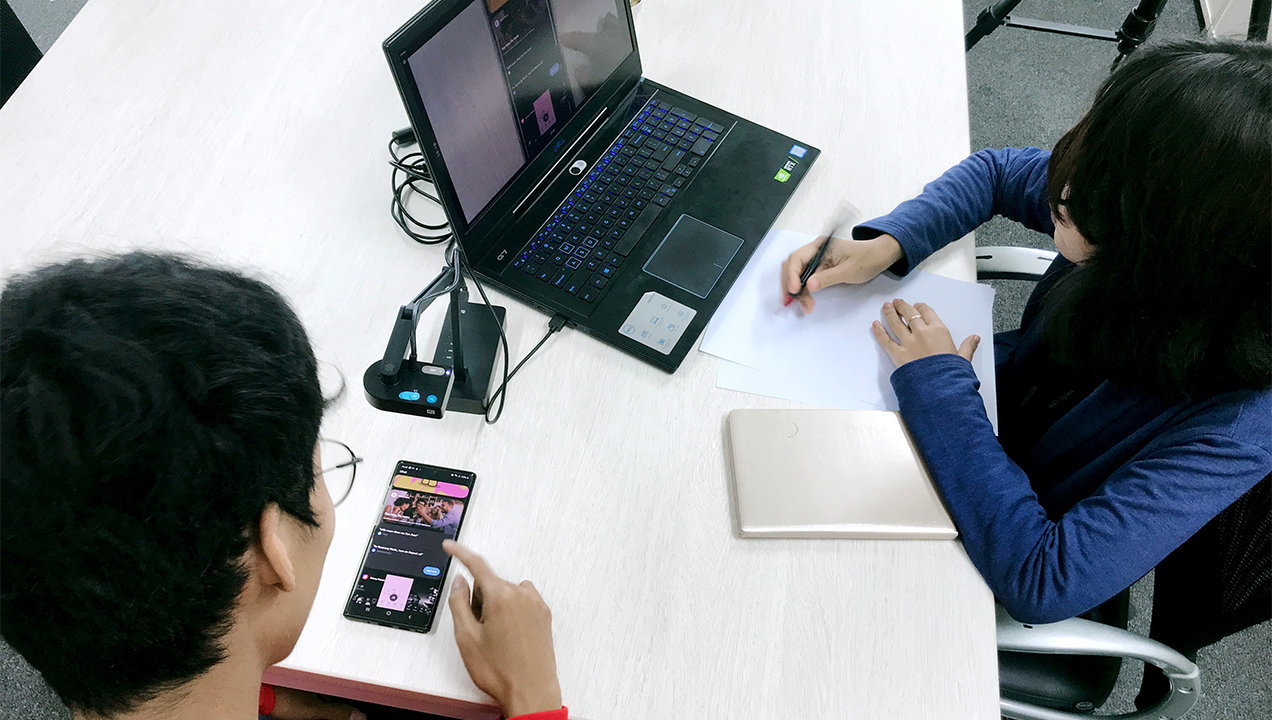Labs Lessons: Working With Different Languages
Welcome back to ‘Labs Lessons’ where we are sharing our tips for conducting research with participants whose first language is different from your own. At Sutherland we work with dependable local partners in the UX Alliance to carry out research in countries all over the globe, and their local knowledge is invaluable. Here, we have pooled our own experience, as well as some tips from our UX Alliance partners, on the nuances of conducting research with different languages.

Image Credit: UX Indonesia
Put time into getting recruitment right
- Depending on the language required for your study – recruiting participants can be a longer process. Allow adequate time for this in your project plan.
- Locate and use a recruiter that is fluent in the research language and immersed in the local culture if possible.
- If your aim is to reach more remote communities then consider Snowball Sampling this will help to build trust and an understanding of what you as the researcher are aiming to achieve
- To reach hard to find audiences, it can be worth recruiting via different mediums. In the past we have used online forums, websites, newspapers and magazines to target different language speakers. A good recruitment partner can be invaluable here, as they can help you understand the right channels to use.
If your aim is to reach remote communities then consider Snowball Sampling this will help to build trust and an understanding of what you as the researcher are aiming to achieve
Spend time planning the sessions beforehand
- Ensure that the moderator is fluent in the local language to avoid cultural or language errors during the session.
- If providing instructions to participants prior to the research, have these translated by a recruiter or moderator who speaks the language in question. Be sure to keep language simple and concise as you would with your native language!
- Similarly, if you’re translating interview questions take time to iron out any translation or cultural nuances beforehand. Test the questions beforehand with native speakers or your recruiter to make sure they make sense! Localisation of content is so important, as it helps to reflect context and aid comprehension.
- Consider that there may be different dialects within one language – Egyptian Arabic is very different to the Arabic spoken in the Gulf region, for example, so take this into account when hiring interpreters or translators.
- Make yourself aware of any political associations with languages. In China, for example, there are different political implications between Simplified Chinese (used in mainland China) and Traditional Chinese (spoken in Hong Kong and Taiwan).
- In addition to language – be aware that visual cues can vary across the world. For example, we recently used the visual metaphor of a dropped ice cream in a research study to suggest disappointment. This didn’t translate at all to participants in South America – where a picture of a missed penalty kick might have been a more appropriate representation.
- If the participant is required to speak in a non native tongue, then make sure that you allow extra time in the session as the conversation is unlikely to be as smooth or fluent. Give participants extra time to form their thoughts and sentences, and avoid making them feel rushed as this will likely impact their ability to make themselves understood. Consider using simplified language and avoid atypical words or phrases. This may mean sessions might need to run a little longer.
Consider that there may be different dialects within one language – Egyptian Arabic is very different to the Arabic spoken in the Gulf region, for example, so take this into account when hiring interpreters or translators.
When running the sessions
- If you are using an interpreter the set up can be complicated so make sure you run a pilot and check everything works well beforehand. Include the interpreter in the pilot, if this is possible. Be aware of the requirements of the interpreters beforehand as some may choose to work in tandem to avoid fatigue.
- If possible, process any translation soon after the session so your team can read the transcript and look for trends that might impact future interviews. Bear in mind that the translated speech may not deliver as much expression as the original – it can sound quite ‘dry’.
- Make sure you speak to your interpreter and/or local partner after each session to answer any questions. Often you’ll hear comments from participants that might raise further questions and your interpreter and local partner may be able to help. This can be where the most interesting insights come from!
Often you’ll hear comments from participants that might raise further questions and your interpreter and local partner may be able to help. This can be where the most interesting insights come from!
Some additional takeaways
- We always recommend using a professional translator, particularly if testing for comprehension. If this really isn’t possible and you consider a translation platform be aware that quality will depend on the standard of the original transcript. The output from these platforms can really vary, and some struggle to deal with different accents. It is highly advisable to pilot any platform you might want to use ahead of time.
- During analysis and reporting, make sure to consult with your local partner, interpreter or translator. This will help to make sure that you’ve not misunderstood, misinterpreted or misrepresented anything.
- Accurate translation during the session really is tantamount to the research being successful when data capturing and reporting, and will reduce the risk of research insights becoming lost in translation.
We hope that you have enjoyed reading about our experiences when conducting research with participants who speak different languages. Make sure to read our previous posts about research with children and older audiences if you haven’t already. Many thanks to the researchers from the UX Alliance who lent their valuable time to contribute.
If you are planning global research and want to know more about our partnership with the UX Alliance then please reach out to mark@sutherlandlabs.com.
